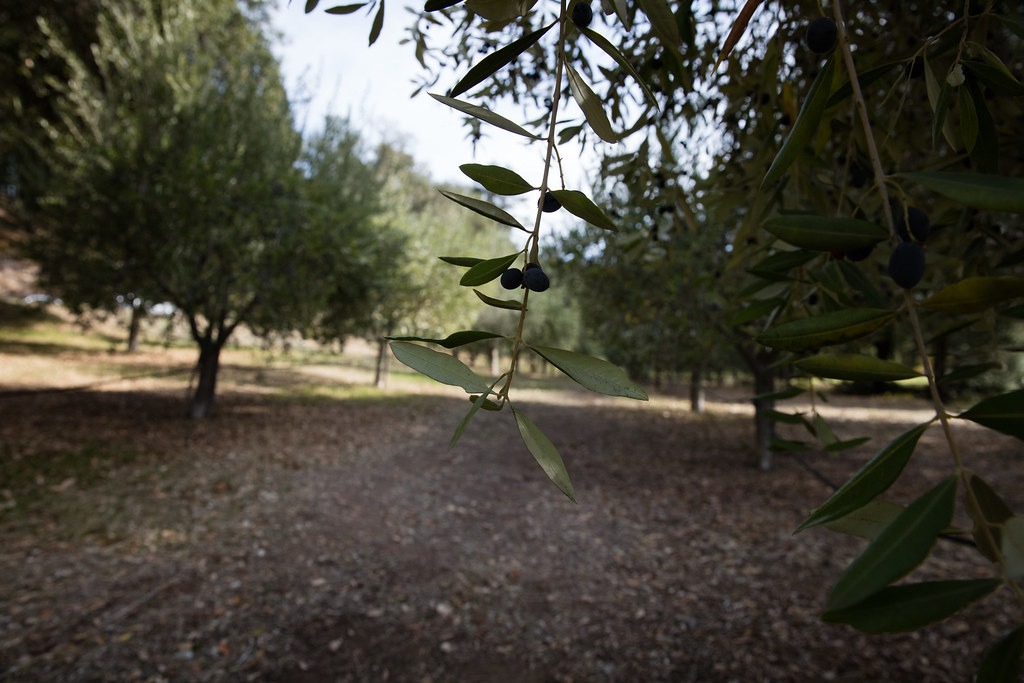

INFORMATION SHEET
I have a couple of olive trees with a bark problem. This particular tree is a bit stressed from lace bug I believe, I'm not sure they've had their full care for the last couple of years due to the transition. It needs a bit of a prune too which I will take care of before I spray it. But will wait for your comments first. See image below.
Sunburn can occur in olive trees as damage to bark, foliage, fruit which is caused by excessive solar radiation exposure and seriously affect growth.
Sunburn can cause the tree the olive tree to be more susceptible to borers. Olive trees affected by sunburn are typically poor in health and if severe enough can result in premature death.
Sunburn in olive trees is usually associated with warm weather coupled with water deficit.
Although olive trees are well adapted to hot and dry conditions, too much heat can result in lower yields, leaf wilt, and reduced photosynthesis as the olive tree shuts down critical functions to respond to heat stress.
Older trees can be damaged when the bark is newly exposed to the sun because of pruning or premature leaf drop. Heavy pruning of olive trees can lead to increase reflected light or radiate heat around established trees can also lead to sunburn.
Sunburn to trunks can leave the tissue dried, cracked and sunken and the bark may peel away leaving the wood susceptible for borer attack or fungal infections to enter the bark for further damage to the exposed hardwood underneath.
Foliage may be brown and necrosis begins at leaf tips, margins and between veins.
Heat stress usually results in fruit drop if an olive crop is present.
Encourage good soil health and moisture-holding capacity. Encourage branch structure with proper pruning and plant training. Retain branches that will help to shade the trunk and be beneficial for cropping.
Give trees adequate irrigation to reduce stress and do not overwater trees.
For olive trees and fruit to reduce the risk of sunburn use Kaolin clay applied as a foliar film to help offer protection in reducing heat stress and intense solar radiation.
Whitewashing trunks may help prevent sunburn which is usually seen as an application of rubberised tree sealant. Sometimes water-based paints are used.
If leaves have not already been killed, sunburn injury to foliage can often be remedied by adequate irrigation, adding shade or shelter, and improving soil conditions.

Bark has been affected by intense sun radiation exposure and also water deficit.
URGENT FERTILISER SUPPLY UPDATE – MAP & DAP SHORTAGE
This summer cropping season is facing unprecedented challenges in fertiliser supply. Availability of MAP fertiliser (monoammonium phosphate) and DAP fertiliser (diammonium phosphate) is expected to remain extremely limited worldwide, with serious implications for growers planning their nutrient programs.
Since 2021, China has imposed strict quotas and inspection rules on phosphate fertiliser exports to protect domestic prices and safeguard food security.
The impact has been dramatic:

Although Morocco, Russia, the USA, and Saudi Arabia also produce MAP and DAP, they cannot offset the sharp drop in Chinese exports.
The result is:
For olive growers and other professional producers, the impacts are already being felt:
Do not wait for traditional ordering windows. Place orders immediately and consider forward contracting for next season. Securing current pricing now helps protect your operation against higher costs and potential shortages later.